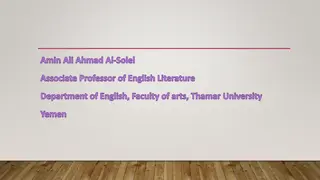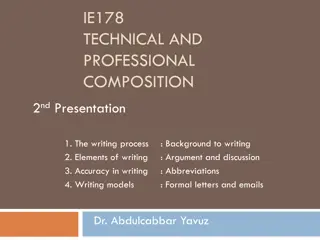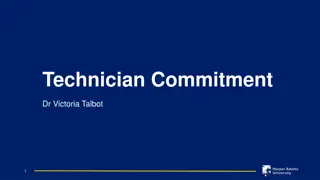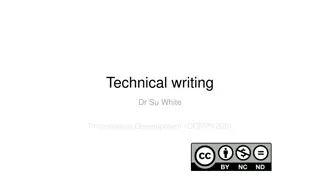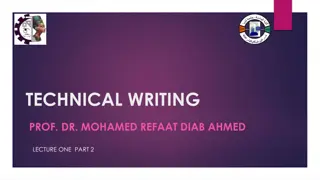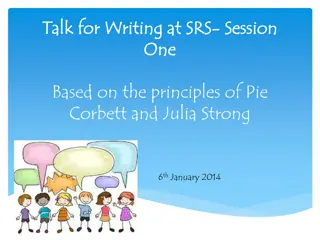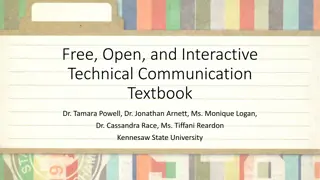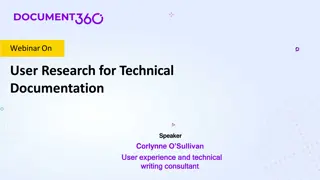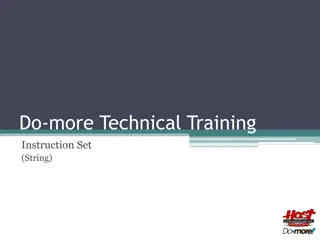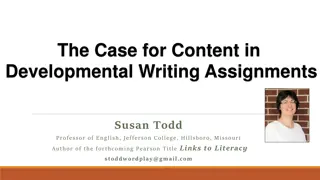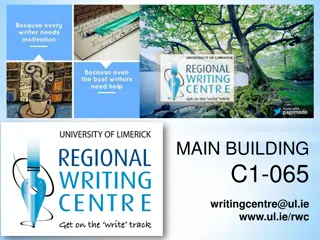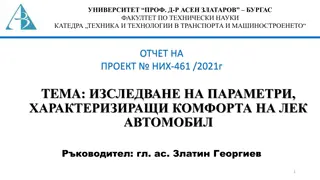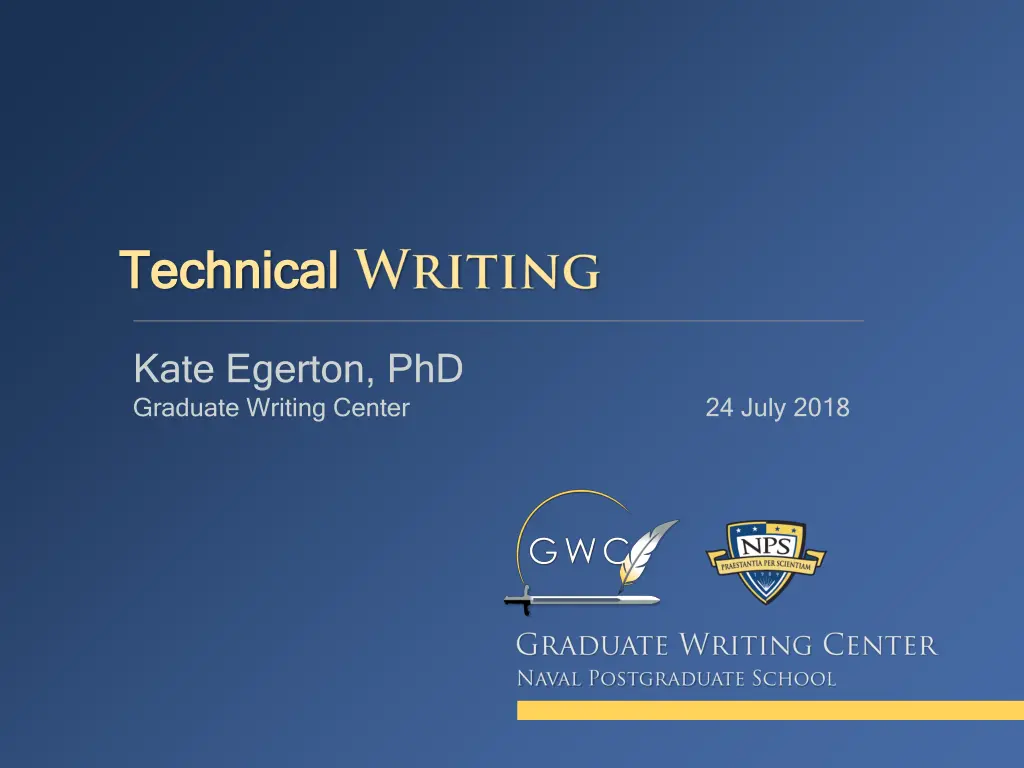
Effective Scientific Writing Techniques
Explore the principles of scientific and technical writing, the Paramedic Method for streamlined prose, and the importance of clear communication in scientific discourse. Learn how to convey ideas concisely and effectively in your writing to communicate with the scientific community.
Download Presentation

Please find below an Image/Link to download the presentation.
The content on the website is provided AS IS for your information and personal use only. It may not be sold, licensed, or shared on other websites without obtaining consent from the author. If you encounter any issues during the download, it is possible that the publisher has removed the file from their server.
You are allowed to download the files provided on this website for personal or commercial use, subject to the condition that they are used lawfully. All files are the property of their respective owners.
The content on the website is provided AS IS for your information and personal use only. It may not be sold, licensed, or shared on other websites without obtaining consent from the author.
E N D
Presentation Transcript
Technical Technical Kate Egerton, PhD Graduate Writing Center 24 July 2018
Todays Agenda Today s Agenda Review principles of scientific and technical writing, examine and discuss pieces of a published report, learn the Paramedic Method, a fast way to streamline sentences and strengthen your prose, and test our new skills.
From the From the AIP Style Manual AIP Style Manual Exactly what information do I wish to present in this paper? For what specific group of readers am I writing? What background information can I assume these readers have? What is the most logical sequence in which I should present the information to readers?
From the From the AIP Style Manual AIP Style Manual Be clear. Consider the beauty and efficiency of the simple declarative sentence. Be concise. Avoid vague and inexact usage. Be as quantitative as the subject matter permits. Be complete, logical, and continuous; use commonly understood terms and define all others; omit unnecessary information. Put yourself constantly in the place of the reader, asking is there any way in which this passage could be misunderstood?
The fundamental purpose of scientific discourse is not the mere presentation of information and thought but rather its actual communication. It does not matter how pleased an author might be to have converted all the right data into sentences and paragraphs; it matters only whether a large majority of the reading audience accurately perceives what the author had in mind. -- George Gopen and Judith Swan The Science of Scientific Writing
The main purpose of any scientific article is to convey in the fewest number of words the ideas, procedures and conclusions of an investigator to the scientific community. Whether or not this admirable aim is accomplished depends to a large extent on how skillful the author is in assembling the words of the English language. -- from an editorial titled Use, Misuse and Abuse of Language in Scientific Writing
The problem is so insidious that it appears even in works devoted to its eradication. --Martin W. Gregory The main purpose of any scientific article is to convey in the fewest number of words the ideas, procedures and conclusions of an investigator to the scientific community. Whether or not this admirable aim is accomplished depends to a large extent on how skillful the author is in assembling the words of the English language.
A final, suggested revision: The purpose of any scientific article is to convey the investigator s ideas, procedures, and conclusions using the fewest words. Whether she succeeds depends on her writing skill.
Style: Toward Clarity and Grace Style: Toward Clarity and Grace Readers look for: a story about characters and actions, strong verbs close to their subjects, old information at the beginnings of sentences and new information at the ends, and for specific kinds of information in predictable places in paragraphs and documents. --Joseph Williams
Lets look at some sections of Let s look at some sections of this article together: this article together: For each one, work with a partner to identify: 1) what you LIKE (and why) 2) what confuses or distracts you (and why) What principles can we derive from this example?
Clarity: Avoid Jargon Clarity: Avoid Jargon Jargon Jargon: : a vocabulary particular to a place of work (abbreviations, slang) Audience familiarity with the topic determines appropriate use of jargon. Sample: For the first year, the links with SDPC and the HAC were not connected, and all required OCS input data were artificially loaded. Thus CATCH22 and MERWIN were not available. Revision: Because some of the links in the computer system were not connected the first year, we could not run all the software codes.
Clarity: Define the Unfamiliar Clarity: Define the Unfamiliar If you must abbreviate, define the term in its first occurrence, and put abbreviations in parentheses. Thereafter, use the abbreviation. (In NPS theses, define terms separately in the abstract and in the thesis body.) Sample: Edgartown Great Pond (EGP) is a vital body of water. Unfortunately, due to an unpredictable influx of saltwater, EPG s delicate ecosystem is in danger of destabilizing.
Brevity Brevity: Use Words Efficiently : Use Words Efficiently Never use two words when one word will do. Sample: The relationship between the nature of salt water to fresh water in the Edgartown Great Pond that fluctuates often is extremely important to everyone including scientists, residents, and environmentalists on Martha s Vineyard. Revision: The fluctuating salinity of EGP concerns many environmentalists, scientists, and residents.
Brevity Brevity: Most Important : Most Important First First Place key information in the main clause. Sample: Despite winning the game, the Patriots made several errors in the first half. What changes?: Despite making several errors in the first half, the Patriots won the game. How about this?: The Patriots won the game, despite making several errors in the first half.
Brevity Brevity: Remove Redundancy : Remove Redundancy Combine overlapping sentences when possible. Sample: Water quality in the Hawk River declined in March. This decline occurred because of the heavy rainfall that month. All the extra water overloaded Tomlin county s water treatment plant. Revision: Water quality in the Hawk River declined in March because heavy rainfalls overloaded the Tomlin County water treatment plant.
Language Language: : Pronoun Ambiguity Pronoun Ambiguity Do not overuse pronouns particularly it and this because readers will not understand the antecedent. Sample: Because the receiver presented the radiometer with a high-flux environment, it was mounted in a silver- plated stainless steel container. So what was mounted?
Language Language: Abstraction : Abstraction Avoid too many abstract nouns. Sample: The existing nature of Mount St. Helens volcanic ash spewage was handled through the applied use of computer modeling capabilities. Sample: Using Cray computers, we modeled how much ash spewed from Mount St. Helens.
Language: Avoid Needless Complexity Language: Avoid Needless Complexity Category Category Example Example Substitute Substitute Nouns utilization functionality facilitate finalize aforementioned individualized firstly, secondly, heretofore use feature cause end mentioned individual first, second, previous Verbs Adjectives Adverbs
Language: Omit Needless Words Language: Omit Needless Words (already) existing mix (together) at (the) present (time) never (before) (basic) fundamentals none (at all) (completely) eliminate now (at this time) (continue to) remain period (of time) currently (being) (separate) entities (currently) underway start (out) had done (previously) write (out) Interdependent (on each other) (still) persists
Highlight Cause and Effect Highlight Cause and Effect Never miss an opportunity to spell out causation where it exists. Sample: T cells, rather than B cells, appeared as the lymphocytes migrated to the thymus gland. Sample: T cells, rather than B cells, appeared because the lymphocytes migrated to the thymus gland.
Active Active Voice: Strong Verbs Voice: Strong Verbs Technical writers want to communicate as efficiently as possible, and active voice is more straightforward and stronger than passive voice. Sample: The feedthrough was composed of a sapphire optical fiber, which was pressed against the pyrotechnic that was used to confine the charge. Revision: The feedthrough contained a sapphire optical fiber, which pressed against the pyrotechnic that contained the charge.
The Paramedic Method The Paramedic Method 1. Circle the prepositions (of, in, about, for, onto, into) 2. Draw a box around the "is" verb forms 3. Ask "Where's the action?" 4. Change the "action" into a simple verb 5. Move the doer into the subject (Who's kicking whom?) 6. Eliminate any unnecessary slow wind-ups 7. Eliminate any redundancies. --Richard Lanham
Quiz Time! Quiz Time!
Finished, Polished Papers Finished, Polished Papers Get to the point Be concise Stay on the point Be focused Respect the reader s time and sensibilities
References References Alley, Michael. The Craft of Scientific Writing. 3rd ed. New York: Springer, 1998. Gopen, George and Judith Swan. The Science of Scientific Writing, American Scientist. November-December 1990. Greene, Anne E. Writing Science in Plain English. U of Chicago P, 2013. Gregory, Martin W. The Infectiousness of Pompous Prose, Nature. 360, 5 Nov. 1992. Higham, Nicholas J. Handbook of Writing for the Mathematical Sciences. 2nd ed. Philadelphia: Society for Industrial and Applied Mathematics, 1998. Williams, Joseph. Style: Toward Clarity and Grace. U of Chicago P, 1990. (available in multiple editions and title permutations; all are excellent)




